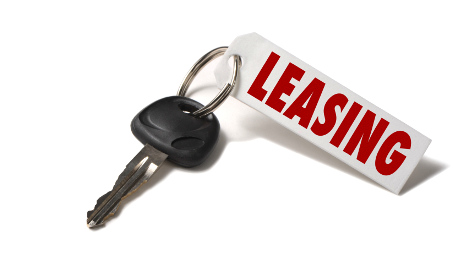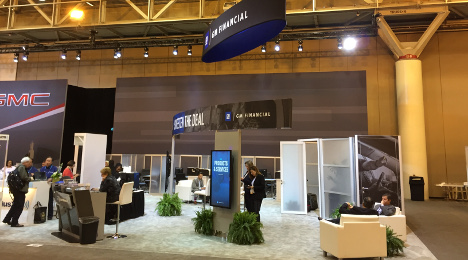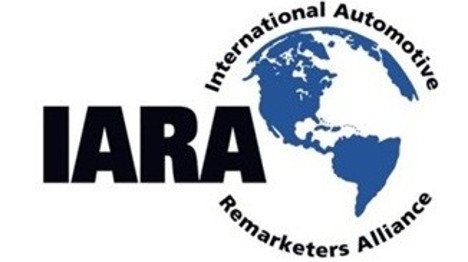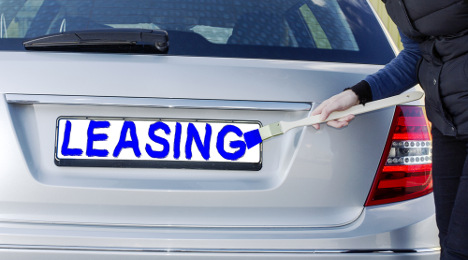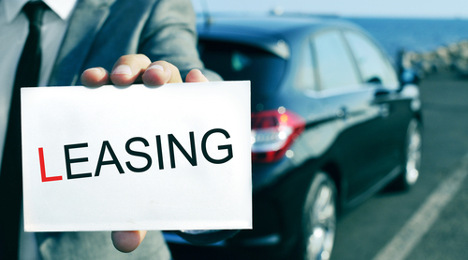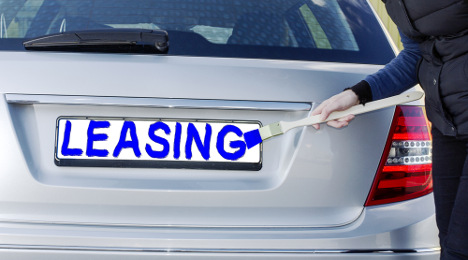There were a record 4.3 million vehicles leased last year, according to an Edmunds report, which said 31 percent of new-vehicle sales in 2016 were leases.
Lease volume has climbed 91 percent over the past five years, and lease penetration — like lease volume — has been on the rise since 2009, but look for that rate to stabilize a bit this year and come in around 30 percent, the latest Lease Market Report from Edmunds says.
In an interview here at the NADA Convention & Expo in late January, Jessica Caldwell — who is executive director of industry analysis at Edmunds — says leasing is so attractive to consumers because, in large part, they’re monthly payment shoppers.
And with the market demand moving to pricier large vehicles, leasing payments can make getting into those vehicles more “attainable” than financing.
A lease payment in 2016, Edmunds said, was $120-per-month lower than the payment on a financed vehicle. For large pickups, in particular, the gap between lease and finance was the largest: $206 in favor of leases.
Plus, the increasingly high-tech gadgetry of vehicles may entice folks to shorten up their ownership cycles, Caldwell said. Drivers may not keep their cars 10 or 15 years like they did in the past.
But the prevalence of leasing is perhaps tempered by the potential impact to residual values and the flood of vehicles returning to the market from leases.
So, automakers have to find a balance in their leasing portfolios. There is some risk as vehicles come back off-lease in droves.
For instance, consider the scenario in a couple passenger car segments.
“For people who leased a midsize sedan three years ago, they’re not holding up their values, so people don’t want midsize sedans and compact cars; they want SUVs. So, the residuals are pretty low — lower than what they would have forecasted back in 2013 when they were going to lease out their vehicle,” Caldwell said.
The fact that some values are not holding up as well as expected is a “big issue,” she said.
“That is what the lease payment is predicated on, so there is a balance that I think automakers have to strike,” Caldwell said.
“Even though I think the lease rate could probably go higher if payments were like they are today, they’re probably going to have to back off a little bit,” she said. “I wouldn’t say a lot, because I think people truly like to lease.”
So to strike that balance, automakers are turning to tactics like mileage restrictions, longer leases and adjusting the timing on lease returns, Caldwell said.
In other words, not pulling back massively on the amount of leases they write, but rather maneuvering around the amount hitting the market.
“All of that, trying to just optimize all the vehicles coming back off of lease returns,” she said.
Truck, SUV strength
But some segments are more immune to this issue than others, due to strong used-vehicle demand. Caldwell gives the example of pickup trucks.
“That is one of those ones (where) they’ll lease them all day if they can because there’s so much demand in the used market,” she said.
Large SUVs is another segment where that seems to be the case, she said.
And appropriately enough, trucks and SUVs are where leasing growth is evident.
Reflecting a similar strength in SUV sales — which, last year, were stronger than passenger car sales for the first time — there were 1.9 million SUV leases last year. This slightly beat car lease volume, which dipped in 2016 “in line with with the greater market trend of declining sales,” according to the Edmunds report.
SUV lease penetration, which as recently as 2009 hit a trough in the 15-20 percent range, has been moving upward and hit 32 percent in 2016, according to Edmunds.
Meanwhile, pickup truck lease penetration climbed from 14 percent to 15 percent last year, having shown significant growth since falling below 5 percent in 2009.
“With gas prices low and fuel efficiency improved, consumers are flocking to pickups and SUVs. The downside is the cost as they are considerably more expensive than passenger cars,” Edmunds says in its report. “Leasing reduces this burden and has been an avenue for consumers to purchase pricier vehicles.”
Are current rates healthy?
When asked if these (overall) high lease penetration rates are healthy for the industry, Caldwell said it’s a tough call to make, but that she believes automakers may have to scale back a bit.
Though leasing was sky high back in the late 1990s and early 2000s, it was “still not at this level,” she said.
“So there’s a lot of unknowns for automakers trying to strike that balance,” she said. “For somebody like a luxury company, it’s OK, because this is something that’s build into their business. But everyone else is still trying to hit that sweet spot of figuring out what (they’re) going to do with all these lease returns.”
For a truck/SUV brand like GMC or Land Rover, the off-lease flood could be a positive, since those vehicles currently have high residuals, Caldwell said.
Used-car remedies
One of the ways to handle some of the off-lease volume — and an opportunity for dealers in and of itself — is used-car leasing, Caldwell said.
Granted, it’s a small market, with current penetration rates a little higher than 1 percent, she said. That still is an increase from past rates. And used leasing could be a more affordable option that new cars or certified pre-owned.
Dealers and automakers may be wise to come together and “explore” their options for used leasing, particularly the opportunity presented in luxury, pickups and SUVs, she said.
Used leasing might make sense. Especially since the flow of off-lease volume isn’t likely to dry up anytime soon.
“It’s not as if there’s going to be a point at which this is going to be revered; because it’s not … it’s continually growing, even to this moment,” Caldwell said.
Another opportunity in the used-car market are the pre-owned standalone stores, which four of the six public retailers are incorporating into their strategies.
Auto Remarketing asked Caldwell for her take on these pre-owned stores (which have ramped up in the past year among public retailers) and whether they make sense.
“We know they’re going to have a lot of potential volume for them. And maybe (they could be) like a depot in which a lot of these off-lease vehicles could go. I think it definitely makes sense. A lot of dealers obviously like the used-car business,” she said.
After all, the used-car market is “usually a sweet spot for them,” she said.
These stores aren’t likely to get the same amount of trade-in volume that a new-car dealership would, so there would have to be some kind of strategy around sourcing, she said.
“But it seems like now is probably a good opportunity for that to happen,” Caldwell said. “Five years ago, when we were coming out of the recession, that wouldn’t have even been a possibility because the used volume was so scant … so now is probably the best time of any if you’re actually going to start something like that.”
Even with about two weeks to consider it, Swapalease.com executive vice president Scot Hall still couldn’t remember when an automaker and its captive finance company decided to cut back on new-model leasing activity without dramatic conditions being in place.
“I’m not saying it’s never happened, but I don’t recall this ever being announced by a major automotive manufacturer where there wasn’t some sort of significant outlying factor such as the recession back in ’08 or ’09. I just don’t recall it ever happening,” Hall shared with Auto Remarketing during a recent phone conversation.
“There may be some extenuating circumstances where the whole industry has cut back, but I don’t recall just a single manufacturer making this sort of announcement ever,” continued Hall, who has spent nearly 17 years of his more than two decades in the industry with Swapalease.
What triggered Hall’s reaction — and perhaps similar ones by other observers who watch leasing closely — was the strategy acknowledgement made by Bob Shanks, who is Ford’s executive vice president and chief financial officer. During the Blue Oval’s conference call back on Jan. 26 to announce its fourth-quarter and full-year results, Shanks mentioned during the automaker’s prepared presentation that the OEM through Ford Motor Credit would take its foot off the leasing accelerator so to speak.
“I just want to highlight that you can see the industry continued to lease at a pretty healthy rate if you will,” Shanks said when referencing a chart containing data from the J.D. Power PIN Network along with Ford Motor Credit information. That chart noted the industry rolled new metal over the curb attached to a lease at a 29-percent clip during Q4. Meanwhile, the Blue Oval’s captive posted a 19-percent lease penetration rate in connection with the new vehicles Ford retailed in the closing quarter of 2016.
“We actually have had a strategy to take down our lease penetration at Ford Credit,” Shanks said during the OEM’s conference call. “This is in response to higher incentives, which is making leasing very expensive as well as lower auction values and recognition of all the units coming back to markets.
“So you can see that we’re starting to separate a bit from the overall industry. And in fact, on a full-year basis, which you don’t see here, we leased at (a rate of) 22 percent, which is actually unchanged from 2015. The industry was at 30 percent,” he continued.
Without credit availability evaporating as it did during the Great Recession nor vehicle production being disrupted worldwide as what happened following the tsunami striking Japan almost six years ago, leasing industry participants such as Hall and Swapalease are left puzzled by Ford’s choice.
“My initial reaction that it just seemed to be a little short-sighted in nature to do that kind of a cutback,” Hall said.
“I can understand being a little bit anxious about having a lot of leases out there and making sure that when those are returned at the end of the lease that there’s not a significant amount of money lost or whatever anxiety might be caused involving the individuals responsible for getting those vehicles remarketed,” he continued.
Rising new-model prices
Hall acknowledged the figures involving new-vehicle leasing certainly are getting larger.
Kelley Blue Book estimated average transaction price (ATP) for light vehicles in the United States was $34,968 in January, increasing by $1,123 or 3.3 percent year-over-year.
ALG’s estimate of average transaction prices in January came in slightly lower at $33,127, but it still represented 1.4 percent gain versus a year earlier. And the average incentive spending that concerned Ford’s leadership, ALG said it climbed by $645 to $3,635 per unit last month.
ALG analysts added the ratio of incentive spending to ATP was 11 percent, up from 9.2 percent a year ago.
With those figures all on the rise, should the industry be more concerned whether or not consumers can afford vehicle leases? Or perhaps only the individuals with super-prime credit and six-figure incomes?
“We may already be at the point where people either have the choice to do a lease or what I would call an extended term installment loan, something above and beyond five years. We may already be reaching the point where we’re starting to see the two realistic choices for your average household being do a lease or do a loan that you’re going to be in for quite some time, something in that six-, seven-, I’ve even seen some eight-year terms being advertised,” Hall said.
Which brings us back to what Hall said is one of the most important aspects of leasing — term length. And he reiterated his pitch that the industry should not only be participating in new-vehicle leasing, but used-car leasing, too.
“We remain very bullish on the fact that used-car or CPO leasing would be a very good thing for these manufacturers as well as dealers for that matter,” he said.
More applicants, but lower approvals
From another consumer standpoint, leasing remains popular as Swapalease’s site activity is indicating. Hall explained that more consumers than ever are completing applications on Swapalease.com, and as a result it’s impacting approval metrics.
Swapalease.com reported lease credit applicants registered only a 50.0 percent approval rate for January, down slightly from December’s level of 54.2 percent. A year earlier, the approvals rate came in at 63.6 percent.
The site noticed January’s approval rate was the lowest lease credit approval rate in the past three years. In 2016, the lowest lease credit approval rate was 54.2 percent in December. In 2015 and 2014 the lowest rates were 54.5 percent and 56.5 percent respectively.
Hall explained the lease credit approvals rate is often similar to the rise in credit card accounts in the U.S. As more applicants file, the higher the chance for applicants to be denied. According to the American Bankers Association, credit card delinquencies increased to 2.74 percent of all accounts in the third quarter of last year.
“By no means do I think leasing is trouble or even more specially the lease transfer business. In fact, I think the opportunity quite large,” Hall said. “One of the biggest hurdles we’ve had as a business is just getting the word out about the fact that you can actually transfer leases.
“Now that we’ve been at this for 18-odd years, we’re starting to reach that tipping point finally,” he added.
Closing sentiment
Bottom line: While Ford decided to pull back on leasing activity, Hall maintained that the industry should consider an overall penetration rate at or even above the 30-percent mark to be good for consumers, dealers, automakers and finance companies.
“When you have 31 out of every 100 vehicles leased, approximately three years down the road you’re going to have a whole of people out in the market who are looking more than likely to get another lease,” Hall said.
“Granted maybe not all of those people will stay in a leasing cycle the next time around. But if history is any indication, there is a good chunk of them who will,” he continued. “We believe that’s great for dealers because they’re seeing those customers again in essentially half the time they might see them in a traditional auto loan. And it’s also good for the manufacturers in planning production and what have you to make sure dealers have the right inventory in stock at the right time.
“We expect even more growth in leasing,” Hall added.
There will likely be a record 3.6 million off-lease vehicles this year, according to Manheim’s 2017 Used Car Market Report.
“And that’s not even close to the peak,” Cox Automotive Inventory Solutions president Janet Barnard said during a press conference here at the NADA Convention & Expo.
That, she said, will happen in 2020, when 4.6 million cars come off lease.
“Selfishly, with Manheim as one of our large brands in our portfolio, that’s really good news for us,” Barnard said. “But honestly, if all we become is parking lots, the news isn’t so good.
“And that’s true whether you’re a dealer or whether you’re Manheim or any part of this automotive industry,” she said. “If things don’t move, if no transactions happen, no one is successful.”
That, Barnard said, will be a common theme in the company’s messaging over the next few years. Taking it a step further, keeping off-lease cars moving will likely be an integral theme in the remarketing industry at large for a while.
But it’s not like the off-lease surge has snuck up on anyone.
“This is no surprise to us,” she said. “This train’s been racing down the tracks.”
The captive view
At General Motors Financial, that train is a full load.
The captive will have 1 million vehicles coming off lease in the next three years, says Nick Heinz, who vice president of remarketing solutions for GM Financial.
In an interview here, Heinz says that a unique challenge for captive finance company consignor like GM Financial is that customer retention plays into their goals, in addition to value retention of the asset they’re remarketing.
Granted, a company having a million leases come to an end over the course of 36 months is a challenge of its own.
“But we also understand that with each one of those cars comes a customer,” Heinz said.
GM Financial, he said, currently has a customer-retention rate in the high 70-percent range.
So, if they can keep up that kind of retention with all those customers exiting leases, that’s quite an opportunity.
It’s also a lot of assets coming back.
To handle the off-lease volume and get out in front of the challenge, the primary objective for the past year, Heinz said, has been to push dealer engagement to “find a home” for those cars
He says a “pretty high” percentage of their GM dealers are buying from GM Financial through its various remarketing channels, but they do want to up that number.
One avenue GM Financial has is its online platform, GMFDealerSource.com, which Heinz said is “still relatively new.”
So, there are competitive platforms out there, where GM dealers can find off-lease volumes from other online consignors. So Heinz sees an opportunity to engage dealers further with GMF DealerSource.
GM Financial has teams in-house at corporate headquarters and in the field who are raising awareness among dealers and educating them.
Collaboration with CPO
Of course, a popular destination for many off-lease vehicles is automaker certified pre-owned programs.
When asked if GM Financial has any sort of collaborative work with the General Motors CPO program, Heinz pointed to the captive’s dealer-facing incentive program called GM Financial Dealer Dividends.
Dealers might earn dividends for originations engagement and buying grounded lease vehicles, Heinz said, which then go into their dividends bank.
Dealers can put those dividends towards a variety of different things on the new- and used-car side, he said, including reimbursement on certified pre-owned fees, for example.
“We have a very unique program on that side where we allow a dealer to redeem them for down payment assistance on a certified pre-owned or a Factory Pre-Owned Collection pre-owned vehicle, which is very unique in that we’re allowing them to apply bonus cash on a pre-owned deal,” he said.
“And so, we have some synergies there through the dividends program … as we continue to go forward, you’ll see a much tighter integration in terms of the dealer engagement and the incentive structures,” Heinz said.
Much of the CEO panel discussion during the Vehicle Finance Conference hosted by the American Financial Services Association revolved around underwriting, originations, compliance and other matters associated with a finalized retail installment contract needed for delivery at the dealership.
However, moderator Charlie Vogelheim, who is the host at Motor Trend Audio and a partner at TPC Management Co., turned the conversation toward the importance of remarketing for few minutes. Each of the four finance company executives on stage described various points of view regarding the challenges commercial consignors have, especially with growing off-lease volume.
“What we’re looking for is stability in the industry. The better the remarketing channels are, they better they can distribute those vehicles, the better it is for evaluations,” said Vince Rice, who is executive vice president and head of national consumer finance at Bank of the West.
“From a lender’s perspective, the more stable things are, the easier it is for us to price to the market and estimate our losses. The better and more remarketing channels is always more positive for us,” continued Rice, who also was installed as the new chair of AFSA’s Vehicle Finance Division Board.
Dale Jones, executive vice president for the Americas at Ford Motor Credit, referenced the off-lease volume projections many experts have shared, noting that likely way more than 3 million units will be coming down the lanes this year.
“As (volume) continues to grow, that’s a lot more vehicles that are going to be pushed through the same brick-and-mortar channels at the physical auctions,” Jones said.
Vogelheim followed up by asking how not only the auction market but perhaps online entities such as Shift and Carvana will help to absorb the excess off-lease volume.
Under a new partnership between the two companies announced in December, Hertz will use Shift’s online vehicle sales platform to sell its fleet vehicles directly to consumers.
Meanwhile, nearly a year after doubling the floor plan credit line for online retailer Carvana, Ally Financial announced a new agreement with the company in January where the finance company will make up to $600 million available to Carvana during the next 12 months through financing and bulk purchases of contracts.
“Using online as a way to look at remarketing and purchasing vehicles … it makes for a nice combination of what goes through the physical auction and what goes through online space,” Jones said.
“I’m sure they’re growing and will continue to grow, especially as the supply of off-lease continues to grow over the next couple of years. We’re going to need both,” he added.
Mark O’Donovan, the chief executive officer at Chase Auto Finance, also joined the conversation about remarketing. O’Donovan shared that since the bank handles leasing programs for its manufacturing partners — including Mazda, Subaru, Land Rover and Jaguar — “as percentage of our overall business, it’s quite manageable.”
But an area O’Donovan mentioned that commercial consignors need to monitor closely is how data can assist them in securing the best performance possible out of the remarketing efforts.
“Our vehicle remarketing head is working diligently on a very detailed plan on how we can use data more effectively to help us. It is going to be critical. Every $50 to $100 matters when you’re talking about this kind of volume as they go through the funnel,” O’Donovan said.
“The data is massive and getting ahead of it is massive,” he continued. “There’s a lot of opportunity out there but it’s a question of how do you get to the data and use it to your advantage. A lot of data to me is useless unless you have the right analytics and framework around it to make it useful. We’re very focused on that.”
The fourth executive involved in the CEO panel was Exeter Finance’s Jason Grubb. While that finance company doesn’t participate in leasing, rather catering to consumers in the subprime space, Grubb offered another perspective on what might eventually happen to off-lease units and the critical component remarketing has.
“The cheaper that used cars get in the future, the better that will be for our customers,” Grubb said.
“Affordability for our customers is really important. Those 2015s, those are good cars for our customers. It will be great for our future originations,” he added.
The International Automotive Remarketers Alliance has launched a new website and opened up its membership renewal and member enrollment period for North America, the organization said in a news release.
Starting today, current IARA members or those interested in becoming members can go to www.iara.biz to renew or apply, respectively.
IARA said in the release that there has been “continued growth” in both its membership and in the summer roundtable conference in the last three years.
“The alliance, which is referred to as ‘The Voice of the Consignor,’ has attracted auctions, service providers and all facets of the automotive remarketing industry to comprise the majority of its membership,” IARA said.
All memberships should be applied for online and are done on a single-company basis. However, parties can purchase additional memberships to identify specific division brands or locations.
IARA utilized a product called MemberLeap — which puts education, membership management and events under the same URL — to do a complete software upgrade, which included the new website.
The lease credit approval rate on Swapalease.com hit its lowest level in three years last month, but that’s not necessarily a bad thing.
According to the lease transfer site, the lease approval rate was 54.2 percent. Such a low rate is typical for the end of the year and actually points to busy buying behavior — or as Swapalease put it, the “end-of-year shopping frenzy.”
“2016 saw its fair share of ups and downs in credit approvals, but despite the volatility we saw an increasing number of volume in buyer activity due to continuous demand for lease takeovers,” Scot Hall, Swapalease’s executive vice president, said in a news release.
“Lower numbers toward the end of the year are a typical seasonal trend that is likely due to an increase in shopping overall,” he said. “It will be interesting to see where the volatility goes entering the first few months of 2017.”
In November, the approval rate hit 64.7 percent, and in 2015, the December approval rate came in at 54.5 percent.
For 2016, February had the strongest approval rate at 70 percent, with December being the low point.
Wantalease.com reported on Wednesday that prices on most of today’s popular leases are increasing slightly entering January.
However, analysts found there are 16 models still being offered for $199 monthly or less, and one unit still has a lease deal for less than $150 monthly. That’s for the Nissan Sentra SV at $139 per month.
Wantalease.com recollected that the Sentra SV was offered at $109 per month in November, but that vehicle, including several others, have seen their monthly price offers increase. What's more, the Volkswagen Jetta S ($199 monthly) is the only car offered for less than $200 with $0 down payment required.
Similar to what was offered in November, four small utilities are on the list for less than $200 monthly (Ford Escape FWD SE at $169; Chevrolet Equinox 2WD LT at $189; Nissan Rogue S FWD at $189; and the Honda CR-V LX 2WD at $199).
Two luxury models are offered currently at less than $300 monthly: The Acura ILX at $219 per month, and the Audi A3 2.0T FWD Premium offered at $299 monthly.
Analysts went on to mention the BMW 330i saw the largest price decline from November and December with its monthly lease offer dropping 13.1 percent. The model is currently offered at $349 per month.
The Honda Ridgeline RT 2WD also saw a noticeable price drop, with its offer falling 12.5 percent from November levels. It is currently offered at $491 per month.
Wantalease.com is a sister marketplace to Swapalease.com.
Lease penetration has reached an all-time high, and its impact goes beyond financial institutions, dealers and automakers.
Exchange marketplaces like Swapalease.com have been affected by the rising popularity of leasing in recent years.
Scot Hall, who is executive vice president for the Cincinnati-based lease exchange company, said demand at Swapalease will typically reflect the leasing trajectory from 12 to 18 months prior.
“As leasing itself trends upward, we’re going to see our numbers trend upward in available lease offerings mid-stream, a year (or) a year-and-half behind that, because that’s when people are going to need or want to get out of those leases,” Hall said in a phone interview with Auto Remarketing last week.
“Business looks pretty good for us moving forward and it has been trending the right direction already for the last couple of years as we move further and further away from the financial meltdown of 2008 and 2009,” he said.
When people want to exit lease
Last month, the company debuted a quarterly report on leasing that analyzed lease activity trends within its marketplace.
During the third quarter, a lessee wishing to exit a lease wanted to do so with an average of 23.2 months remaining on the lease, according to the report. A year ago, the average time left was 21.5 months.
Granted, that’s not a huge difference, Hall said.
But one reason some folks are opting out of their leases earlier than before could be the simple fact that more people are aware of this option — the challenge of educating the public about lease transfer continues to be a major priority for Swapalease, Hall said.
In other words, “the more people that know about the ability to lease transfer, perhaps that will bring some people into the marketplace a little bit sooner,” he said.
Additionally, he said, it may stem from the fact that with lease volume growing, they are likely to see more lessees that need or want to transfer out of a lease.
Plus there is more leasing advertised. Hall said: “They may be finding something that meets their needs better or at least they think it will meet their needs better if they can get out of their current lease.”
Search patterns
Looking at search activity trends on Swapalease.com, European luxury brands still rule the day, with BMW grabbing 15 percent of total traffic in Q3 and Mercedes-Benz taking a 12-percent share.
But domestics, including some mainstream brands, are making some headway. Swaplease.com search traffic for Buick was up 9 percent year-over-year in Q3, with Ram traffic up 8 percent. GMC climbed 5 percent, Cadillac was up 4 percent and Chevrolet was up 3 percent.
“There’s definitely more leasing going on (among) the domestic brands. And to clarify that slightly, obviously Cadillac would be a luxury brand and it’s been a fairly heavily leased brand for quite some time,” Hall said. “But what we’re seeing is leases really moving even more downstream.”
And at the same time, it’s stronger than ever on the luxury side.
According to Edmunds.com, luxury lease penetration through 10 months of the year is at 51.2 percent.
“Leasing accounts for a larger share of new-car transactions than ever before, and nowhere is this more true than in the luxury market,” Edmunds executive director of industry analysis Jessica Caldwell said in commentary from company at the end of November.
As for overall market, Hall said: “I don’t know that we’ll ever get to 50-odd percent of all vehicles being leased, but I don’t think it’s out of the realm of possibility. And I think as more domestic automakers offer leases, we’re going to see that search traffic continue to trend upward on Swapalease.”
Swapalease.com reported vehicle lease credit applicants registered a 64.7-percent approval rate for November, a 3.2-percent increase from the previous month as the October reading stood at 61.5 percent.
A year ago, analysts pointed out that the approvals rate was just 57.9 percent during the same month.
The site acknowledged this year's approval rates have been down in comparison to 2015. The lease credit approvals rates have been fluctuating on a month-to-month basis. So far this year, the average credit approval rating has been 63.8 percent.
Although 2016's numbers have remained relatively low throughout the year, Swapalease.com executive vice president Scot Hall noted both October and November have produced higher credit approval rates than the same months in the previous year.
“Although the credit rates have bounced back from last month we don’t expect that to skyrocket anytime soon,” Hall said. “The end of the year usually yields lower numbers for a variety of reasons, including an increase in shopping activity overall.”
Not only is lease penetration riding a record wave, leasing volume may experience a never-before-seen trend in 2016, as well.
That’s according to Edmunds.com, which shared commentary from executive director of industry analysis Jessica Caldwell ahead of automakers reporting car sales on Thursday.
“Leasing accounts for a larger share of new-car transactions than ever before, and nowhere is this more true than in the luxury market,” Caldwell said in the commentary. “In fact, luxury automakers are on track this year to lease more cars than they sell for the first time ever.”
An Edmunds data chart shows that year-to-date overall lease penetration through October is at 30.7 percent. For luxury leasing, it’s at 51.2 percent.
To put it in a different perspective, overall lease penetration is now higher than luxury lease penetration was just 11 years ago (29.9 percent).
It’s also nearly double the rate from 2009, when leasing dried up and tumbled to 16.6 percent of new-car sales, according to the Edmunds data.
As far as the overall new-car market, it is in good shape for another record year. Still, don’t count your chickens before they hatch.
“November sales have the industry well-positioned to set a new annual sales record this year, but a new record is far from guaranteed,” Caldwell said.
“Expect to see a flood of ads for holiday season sales events in the coming days and weeks, especially for luxury brands, trucks and SUVs,” she said. “If we see any year-over-year lifts in these segments in December, then it's a good bet that the industry will top last year's record-high sales."


